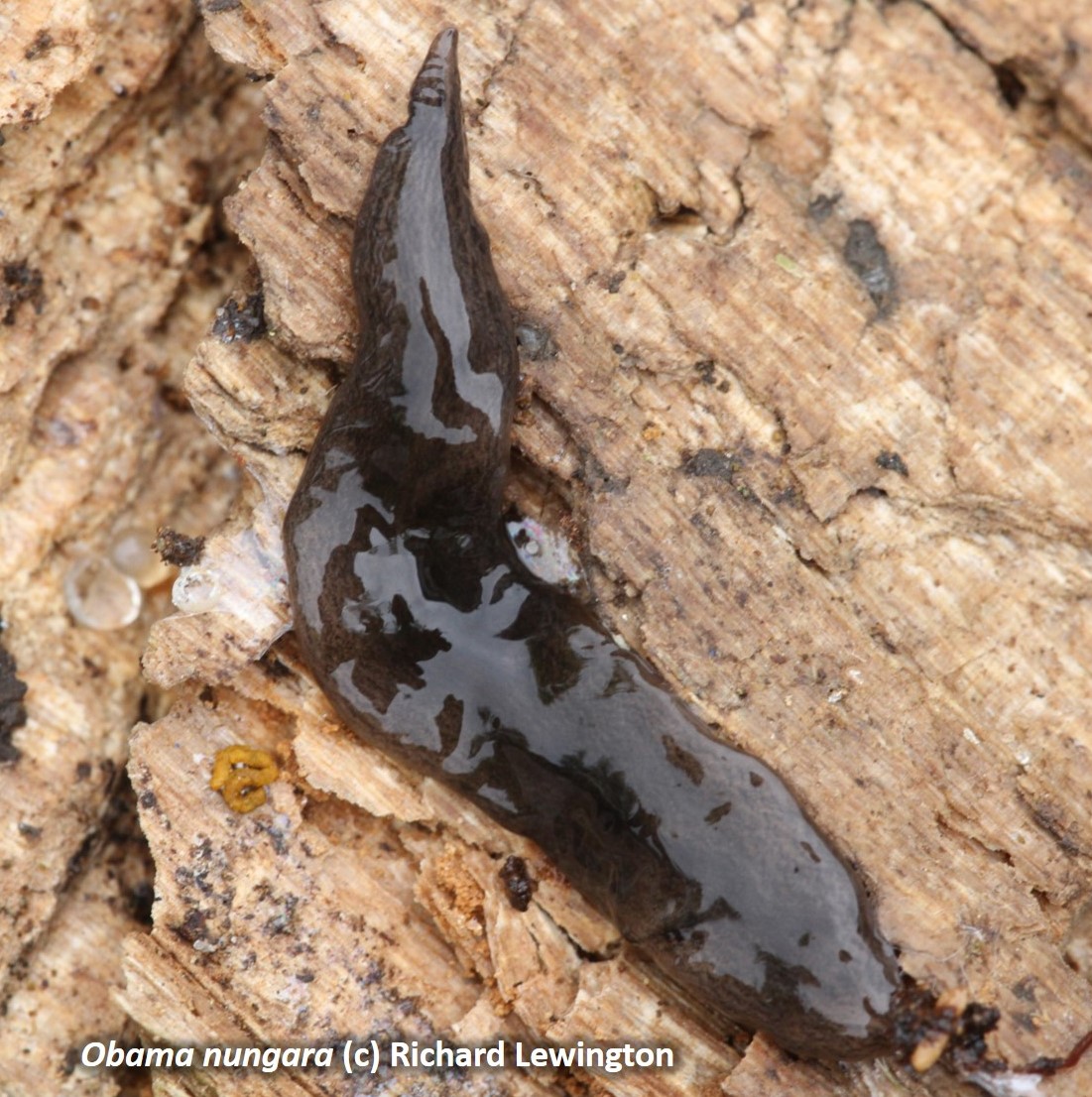Flatworms
The flatworms (phylum Platyhelminthes) are not segmented like earthworms (and indeed all members of the phylum Annelida) and have a flattened shape. This phylum includes the parasitic flukes (class Trematoda) and tapeworms (class Cestoda), and the free-living flatworms (class Turbellaria). The terrestrial species known to occur in Britain belong to a group known as the planarians (order Tricladida).
Only 4 native species of planarian are known to occur in Britain:
- The most common species (Microplana terrestris) is 1-2cm in length and most likely to be found on moist nights, whereas the remaining species are more strictly subterranean. This species is a scavenger, feeding on dead slugs and earthworms.
- The largest British species (Microplana scharffi) can reach 5cm in length. You can tell what these have been feeding on by their colour: pink for earthworms, yellow-grey for slugs and bright yellow for unfed!
- The smallest British species (Microplana humicola) reaches just 0.5cm, making it elusive and highly under-recorded. It is white in colour and greenish at the head end. Little is known about this species, including what it feeds on.
- The 'Snake-headed Flatworm' (Rhynchodemus sylvaticus) gets its name from the way it moves - holding its head above the ground and waving it from side to side as it moves. It is 1-3cm in length and little is know regarding its feeding habits, though flatworm expert Hugh Jones has reported observing it feeding on woodlice.
Native planarians and earthworms have evolved side-by-side (as with many other earthworm predators such as badgers, hedgehogs, moles and many species of bird), with a balanced predator-prey relationship. Therefore, there is no need to be alarmed if you find native species of flatworm in your garden. However, there are a growing number on non-native species of flatworm being introduced into the British Isles...
Flatworms Versus Earthworms
Non-native flatworms can pose a risk to native earthworm populations if the species has a taste for earthworms. We'll introduce you to three earthworm-eating non-native flatworms below, but please check out the Buglife Non-native Land Flatworms guide for more details on these species and others (including ID tips).
New Zealand Flatworm

The New Zealand Flatworm (Arthurdendyus triangulatus) originates, unsurprisingly, originated from New Zealand and was introduced to the UK as far back as the 1950's (likely through imported plants). It feeds on earthworms that emerge from the ground to feed at night (the deep-burrowing anecic species, such as Lumbricus terrestris) and can be found taking refuge under stones, wood or even polythene.
Unlike most other earthworm predators the NZ Flatworm can enter an earthworm burrow,rendering anecic earthworm's main defense mechanism against predation relatively futile. The NZ Flatworm requires damp, cool conditions to survive and cannot survive in dry soils.
The NZ Flatworm has a widespread distribution and is relatively common in Scotland and Northern Ireland.
More info: NZ Flatworm Species Factsheet on the GB Non-Native Species Secretariat website
Australian Flatworm

The Australian Flatworm (Australoplana sanguinea) is another earthworm-eating flatworm, this time originating from Australia. The first record of this species in the UK dates back to 1980 on the Isles of Scilly, again thought likely to have been introduced through imported plants. It's diet is thought to be solely earthworms and it can affect earthworm population structure, with some species being more affected than others.
The Australian Flatworm is widespread in South West England, and when present at a site can be abundant in numbers. It is usually found under stones, planks, plastic sacks and other refuges on the soil surface.
More info: Australian Flatworm Species Factsheet on the GB Non-Native Species Secretariat website
Obama Flatworm

The Obama Flatworm (Obama nungara) is a relatively recent introduction to the UK, originating from Brazil. This non-native flatworm is already a threat to agriculture across France, and was found in a pot plant at a garden centre in Oxfordshire in November 2016. It was first found in Europe on Guernsey in 2008, but has spread through France and into Spain and has now been discovered at a handful of locations in the UK.
A known predator of earthworms and land snails, there is very little additional information on the current status of this species in the UK.
More info: Obama Flatworm Species Factsheet on the GB non-Native Species Secretariat website
Want to learn more about non-native land flatworms?
 PotWatch, is a Buglife campaign to highlight the role the importation of pot plants plays in establishing invasive species in the UK. In the first stage of this campaign they are asking people to record countries of origin of plants they purchase at their local garden centres.
PotWatch, is a Buglife campaign to highlight the role the importation of pot plants plays in establishing invasive species in the UK. In the first stage of this campaign they are asking people to record countries of origin of plants they purchase at their local garden centres.
Buglife would also like you to keep a look out for flatworms in the plants you purchase. To help you they’ve created a basic guide to flatworms downloadable from the Potwatch survey webpage. When you’re re-potting your plants keep an eye out for flatworms and their eggs and send in photos of any you find.
Craig Macadam, Buglife's Conservation Director, provides an overview of the non-native land flatworms that have been recorded within the UK in this FSC Virtual Meetup. In addition to the three flatworms mentioned above, this video covers the other flatworms that predate on earthworms as well as those that prey on other invertebrates, and those whose diet are yet to be determined...

Except where otherwise indicated, this work was created by Keiron Derek Brown on behalf of the Earthworm Society of Britain and is licensed under a Creative Commons Attribution 4.0 International License.

 Join us now!
Join us now!